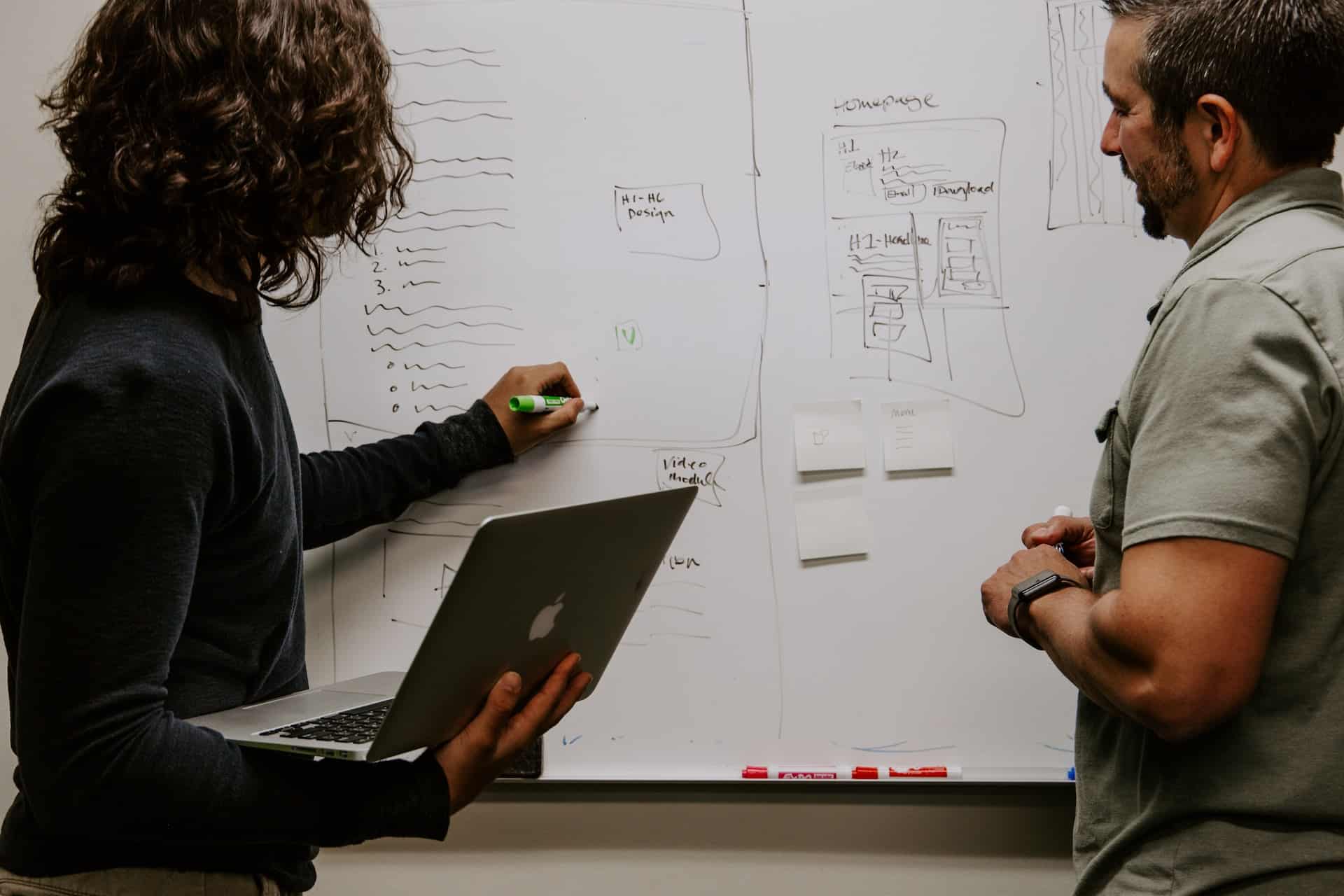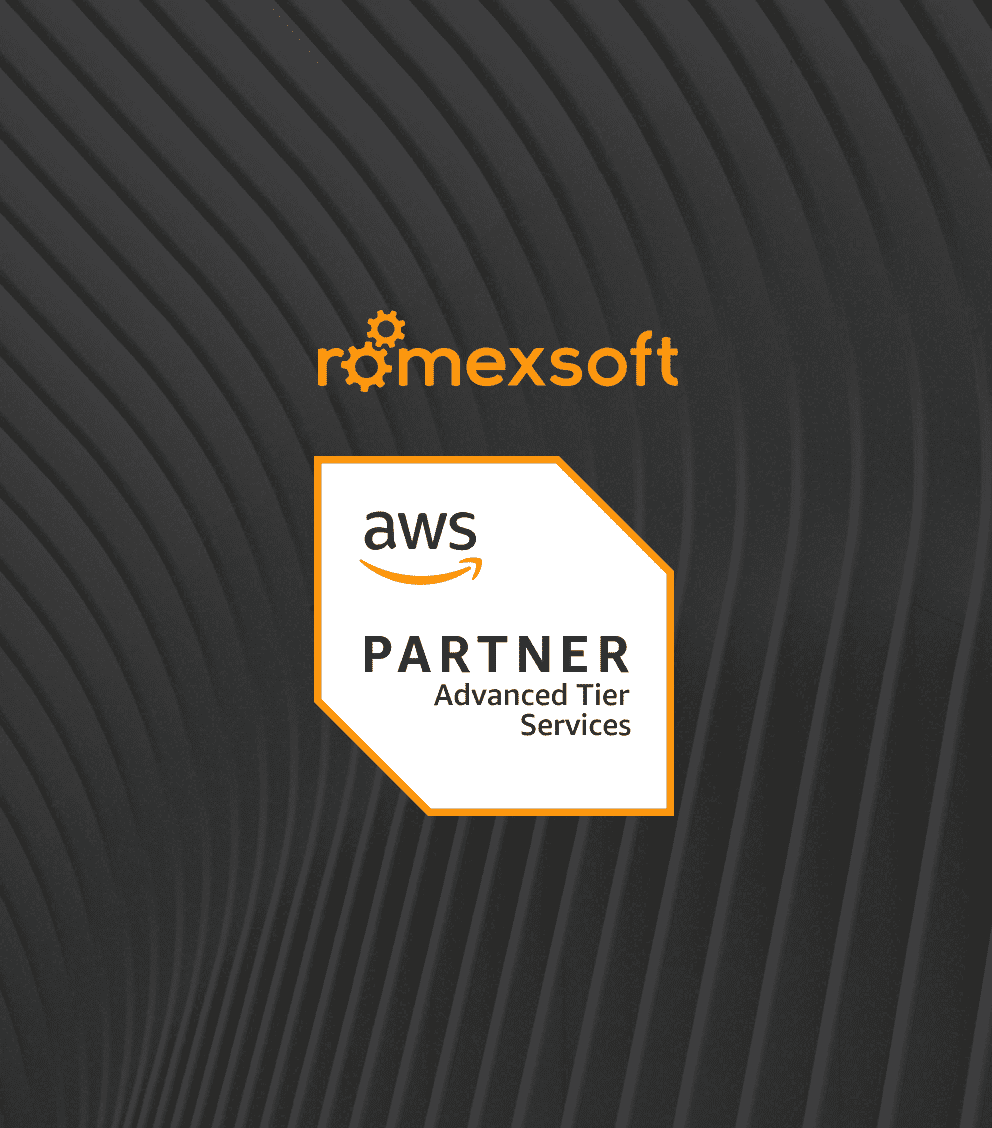Application Modernization Foundations for Successful Cloud Journey
As you are assumingly after getting maximum transformational value out of the cloud to ultimately deliver more value to your customers rather than solely provide services, you may be interested in what a modern application is and how to get hold of it. Business application modernization is no straightforward task, and in order to leverage cloud capabilities and improve competitive position, one should get the hang of both basics and intricacies. So we are here for you, to shed light on:
- what a modern application is
- what stumbling blocks occur on the way to app modernization
- how much SRE affects app modernization and migration
- what difference the DevSecOps processes make
- how to modernize apps successfully.

Table of Contents
It is doubtlessly a promising realization for the market that the obvious transfer of one’s digital assets to the cloud without overall approach transformation does not bear transformative outcomes. Affiliating with cloud-native services, organizations discover that traditional methods and approaches, which worked wonders on-premises, are no longer effective. We are going to start simple and outline the vital steps on the way to application modernization that will make a difference, taking into account the perspectives of design, development, security and operations.
By proceeding into the article, you will uncover how to achieve the utmost performance and the most stringent security regulations’ compliance and at the same time reduce manual effort in modernizing your systems.
Table of Contents
Modern application characteristics
Flawlessly functioning workloads and applications are considered an idée fixe for technicians and non-technicians alike. In order to get a bit closer to attaining that, defining would be step one. Thus, the attributes of the modern application architecture enlist the following:
- Well-structured architecture
- Self-repair mechanism
- Automatic scaling capability
- Autonomic response and auto-remediation
- State management system
- Infrastructure/Governance/Security/Policy as a code
- Pipeline-updated code
- Blue/Green deployments
- Hyperautomation
- Low manual toil
- High resiliency
- Robust security
- Simplified updating process
- Innovation-friendly environment
By contrast, legacy applications are constrained by computing resources the on-premise servers can provide. That fact entails the necessity to fit very specific parameters on the one hand and maintaining physical hardware which usually fails to conform with the customers’ evolving requirements on the other.
Duly noted, cloud-hosted modern application frameworks require substantial investments as well. However, the competitive and ever-progressing cloud vendor environment promotes updating and innovation. To be added, the capital expenditure costs of owned in-house servers and mainframes still much differ from the cloud-inherent subscription-based expenditure.
The key problem of application modernization – alignment
The prevalent model one observes among numerous organizations, especially within the public sector, consists in a huge amount of legacy infrastructure in the need of constant management and updating. This, in many cases, generates a conflict among the priorities of the creators and operating teams, in some cases further aggravated by the financial complexities and the FinOps teams.
A unified operations paradigm calls for bridging the capability gaps, addressing security and compliance mandates, achieving alignment within the teams of the enterprise, and gaining a certain level of financial literacy to manage the systems effectively. Significant challenges to digital transformation, and application modernization process, in particular, arise on account of these misalignments:
- Capability gaps
- Security and compliance mandates
- Legacy approaches to solution development
- Lack of business alignment
- Lack of standardization & reuse
- Cloud financial literacy
Cloud value alignment
As stated above, a unified operations approach in your environment is nowadays quite a challenge. Though, it can be implemented by fulfilling certain conditions, which will be illustrated below.
The ultimate level of digital alignment, strengthened by the infrastructure’s self-service and self-creation capabilities, is quite attainable with the following essentials: an adaptive foundation with capabilities suiting the amount of data processing, operation unification, and a holistic approach to cloud migration with the move itself seen as a step towards a transformed, more unified and centralized IT infrastructure.
Return on application refactoring
Suppose you have looked into migration, whether as your ultimate destination or a part of the broader digital transformation-related aim, you are familiar with the concept of migration strategies. Modernization occurs with the medium of those: refactor, rehost, retire, repurchase – each of the paths entails various returns and associated value. Our experience suggests that on average the greatest value can be gained through app refactoring.
Despite this fact, rearchitecting each of the legacy applications is not a valid option. In the best-case scenario, some old-architectured systems can be retired. For the existing applications, one can prefer refactoring, or as some technicians put it, an approach of opportunistic refactoring: examining the environment around an app and modernizing it along with the application.
There is an opportunity to introduce changes into the process of managing, monitoring and safeguarding applications within their environments, let’s call it application elevation. We are going to take a look at the most topical and compelling examples of such.
To begin with, ‘elevating apps’ can be seen in the deployment process, whereby it may include the application code update proper, traffic management via load balancing, or downtime and risk-reducing blue-green deployment strategy.
Another probable case features a database application one intends to migrate. While moving a database to a cloud-based platform, it is reasonable to make the most of the built-in services without the urgent need to profoundly rewrite the application’s code. One can, and should at least attempt to boost the overall performance of an app by executing the native cloud tools for optimizing its various operational, financial and security components.
Ultimately, when dealing with legacy applications, the pivotal moment is minimizing the amount of manual labor, especially repetitive and time-consuming work, devoted to maintaining an app environment likely to be later reduced or retired. Additionally, one wants to avoid the so-called glass-watching among the personnel that indicates thoughtless mechanical reacting to events rather than viewing the given infrastructure critically as a whole.
The role of site reliability engineering (SRE)
As you run what you own and got built, operations had better be automated through code. For legacy applications, it is advisable to apply the infrastructure-as-code approach and implement state management by using services like AWS config, which essentially prevents configuration drift and enables rollbacks to the desired previous state. This approach aligns with the principles of site reliability engineering (SRE) which brings software engineering and automation to get a reliable, resilient, available, maintainable and secure system.
One would rather explore the possibilities that software-based management and automation render, primarily to the private sector which has to put up with inefficacy, labour shortages, and accumulating technical debt. Having disposed of managing hardware in data centers with the advent of hyper-scale cloud providers, we are now focusing on managing everything effectively through code which fits in the idea of site reliability engineering.
SRE – pods and squads
We have identified a major problem when it comes to labor distribution among teams and departments. The DevSecOps workflow appears skewed inasmuch as the majority of personnel is involved in operations, followed by security and only then development.
If that be the case, our objective is to move more tasks towards the beginning of the development cycle, allowing developers to utilize services of and engage with both security and operational teams. One may face a considerable hurdle on the way to evening out the DevSecOps team imbalance if one has a habit of heavily investing in security and operations. To facilitate the left-hand shift, a common suggestion is identifying the areas within your organization that require lots of manual toil to tackle security, compliance and break-fix problems. What can be done to address these is creating a backlog for the developers to primarily concentrate on, arranging both pods and squads to deal with specific missions. In this way, you are in for generating elastic engineering capability.
Cloud DevSecOps approach
The problem with the aforementioned DevSecOps model imbalance hinders value extraction from the cloud and its delivery to the customers. Compare for yourself: would you rather invest in the treatment of never-ceasing security and functional issues or the creation of new features and capabilities?
The DevSecOps strategy comes into action upon establishing an adaptive foundation and providing capabilities for developer teams to deploy in a consistent manner. The primary contribution of SRE is the utilization of services which ensure integrating security, as well as testing, very early in the software development process thus leveraging DevSecOps engineering. As an outcome, an organization arrives at self-healing capabilities to prevent or patch up operational difficulties, and security considerations to address vulnerabilities.
Let us envisage two contrasting mutually exclusive scenarios.
It is not an uncommon experience that whenever enterprise apps come to a failure, the system administrator would typically log into the affected system to identify the root cause of the issue. This often involves pinpointing a specific service that has become unresponsive or “hung,” which can make the entire application go down. One does not always have to reboot the entire server to address the problem, though, – the sysadmin can simply restart the affected service instead, and so resolve the issue without causing any unnecessary downtime. This method can be effective, especially if a failure occurs infrequently. The downside is, it can be time-consuming for the sysadmin and may also be disruptive to the current users. Additionally, it may not address the underlying cause of the problem, which often results in the same issue recurring later on.
Alternatively, having adopted a software lens approach which views the system as software managing software, an organization may implement a more effective solution. Let’s say, a skilled sysadmin could develop a runbook routine that automatically restarts the affected service based on a pre-determined KPI or a failure-triggering event. Such kind of preventive approach is not only time-saving but also minimizes downtime and enhances the UX. To be added, the SRE team could develop load-balancing services to ensure traffic redirection in case one server fails temporarily, thus minimizing potential disruptions.
Now, suppose we opted for the second scenario, but in due time and for each of the manual operations. By meticulously picking them out on account of the value they can generate and putting them in a prioritized backlog, you can commence labor reallocation with a view of boosting the innovation part of the modern application development process. DevSecOps implementation empowers developers to focus on their core responsibility of developing, by automating time-consuming manual tasks and freeing up their bandwidth.
The formula for successful cloud application modernization
There is no one-size-fits-all formula for cloud-native application modernization and migration, as the specific approach and strategy will depend on the unique characteristics of the application, the business requirements, and the goals of the modernization effort. However, there are some application modernization best practices that can help increase the chances of success.
Here are some major steps to take into advisement:
- Creating the foundation of a state-managed templated code.
- Setting up the pipelines for creators and builders.
- Strengthening the role of the SRE’s team as a link between operations and developers.
- Ensuring alignment of managed services with DecSecOps services and SRE model.
- Eliminating manual toil on an ongoing basis.
- Automating every feasible process.
Let’s discuss those items in more detail.
Firstly, it is essential to construct an adaptable foundation that takes into account a software engineering perspective when executing tasks in a cloud-based setting. This involves carefully examining all actions taken within this environment and contemplating how they can be optimized through a software engineering approach.
The second point is, to ensure optimal efficiency and standardization within your organization, creating infrastructure as code and establishing a recurring model for builders and creators to follow is absolutely critical. By doing so, you can avoid developing monolithic software and instead focus on building microservices that can operate on containers.
Thirdly, it is also crucial to have a competent SRE team in place to enhance the reliability and resiliency of your systems while simultaneously reducing manual labor and repetitive tasks that are often performed by traditional IT staff. In terms of training your sys admins, it is beneficial to encourage them to become proficient in programming and scripting: the most successful administrators are often the ones who have a knack for writing specialized command lines or shell scripts. By embracing a cloud-based approach, which often revolves around service-oriented architecture, these individuals can play an instrumental role in enhancing the overall environment.
Then, with a view to addressing the issues effectively and timely, you may resort to outsourcing your managed services. In this case, it is important to ensure that the provider you choose is utilizing next-generation concepts and approaches that align with your organization’s goals. Opting for the cheapest provider may seem like an easy choice, but can lead to problems as infrastructure costs increase and operational costs rise in tandem. Avoiding this outcome depends on partnering with a provider that is committed to continuously improving your environment and helping you expand your capabilities. By shifting resources from the SRE team to the build team and creating a stable environment, you can reduce your operations costs and simultaneously enhance your organization’s innovation and agility.
Your organization will run the chance to reap the benefits offered by the cloud on condition that it reaches complete alignment in all the processes, including development, finance and operations, security and business stakeholders. The shared agreement and understanding of cloud migration substantially increase the value that can be gained from application migration and modernization.
Finally, as stated many times before, the principle of automation is to be kept in mind and applied across all aspects of your operations, including monitoring. Mere modernization of your applications alone will not suffice, you also would like to modernize your operations and security capabilities, unifying them as best as possible. While it is true that cloud migration can lead to cost savings and increased capability, it is also vital to ascertain that the costs of managing, operating, securing, and ensuring compliance in your environment are decreasing in proportion to the benefits your business is provided.
How to use the formula
Here you can see 5 steps in the formula of advanced application modernization, they will also be explained in depth further.
- Look at modernization through a software lens
- Use a proven framework to assess the entire app portfolio
- Assess your modernization readiness
- Identify Amazon funding programs with a certified AWS partner
- Align Ops model before modernization
Look at modernization through a software lens
We highly recommend not separating development, security, finance and operations. Instead, seek to not only establish a holistic approach by implementing DevSecOps but also view it and the migration process through a software lens. A primary objective for realizing the value of the cloud environment is setting up repetitive automated processes which can be utilized across the organization, regardless of the team.
Although creating infrastructure code for deploying a specific three-tier web application may take longer, the effort may be worthwhile as the resulting code can potentially be reused elsewhere. Besides, this approach may help in managing drift and configuration issues that arise in the cloud. This strategy can also be applied to legacy applications by incorporating umbrella services that reduce the need for constant management and allow for more efficient use of time. When speaking of the limited labor pool, prioritizing development efforts in order to address issues early in the software development cycle is key.
Use a proven framework to assess the entire app portfolio
When assessing your application portfolio, utilizing an application modernization framework to guide your evaluation process makes sense. This includes examining the different “R” paths for migration and determining the return on investment for each one.
Another point to take into account is identifying the noisiest and most costly applications in your portfolio, not just in terms of development but also maintenance. A crucial aspect of modernization is to develop a strategy for migrating apps and ensuring they can be contained and controlled in the target environment. This process involves mapping dependencies, prioritizing the order in which apps will be migrated, and gaining visibility into emergent patterns. By following a structured approach, you can streamline the modernization process and maximize your returns.
A simple VM move from on-premise to a cloud platform is barely enough. Creating a consistent set of services and building an adaptable pipeline for developers to enable quick updates and blue-green deployments is what makes a difference. On top of that, legacy applications do not have to be retired or rewritten, as increasing their capabilities can reduce toil and improve functionality. By adopting a pattern-based approach and optimizing the pipeline, you can migrate code and data without having to move entire machines to the cloud.
Assess your modernization readiness
Transitioning to a DevSecOps methodology requires a thorough understanding of all the indispensable components to enable builders to create and reduce toil. Such a comprehensive view can be generated by conducting an application modernization assessment with a product-oriented mindset that prioritizes building products for the entire organization. Without these key components and a strategic approach, the shift to DevSecOps can be difficult to implement.
Work with a certified AWS partner
Should you be challenged in your aspiration to change the culture of your organization and get everything and everyone aligned, consider partnering with a strategy consulting firm that has expertise in next-gen characteristics. They can assess your entire app portfolio and help determine whether to retire, re-platform, re-host, or refactor your applications. Look for an application modernization consulting partner with experience in building secure and compliant, let’s say to FedRAMP, environments. They are supposed to take a software-focused approach and address all organizational challenges to ensure alignment and provide a unified operations capability.
Align Ops model before modernization
So as to gain transformational value from the cloud, IT organizations had better focus on providing value and continuously increasing it rather than just managing services. The means to get there include handing more responsibility to the left-hand side of the DevSecOps equation, encouraging autonomy, inter alia, through self-selecting opportunities for users, and improving the innovative capacity which can potentially give you the edge in the competitive landscape.
To achieve alignment, one wants to avoid continuously increasing IT costs while maintaining the system at the former level. Adopting a modern technology stack based on microservices is just the first step. Alternatively, organizations should reach an inflection point and use the momentum to elevate their applications while being mindful of new capabilities creation and leveraging the investment to drive innovation.
Application Modernization Foundations FAQ
Undertaking cloud application modernization can come with challenges such as ensuring security and compliance, managing costs, and handling the transition from legacy systems. These challenges can be mitigated by leveraging the robust security features of the cloud, using cost management tools, and adopting a phased approach to migration.
The principles of cloud app modernization can enhance business value by improving agility, scalability, and efficiency. This includes using cloud services for serverless computing, containerization, and DevOps practices, which can improve the speed of development and deployment, reduce costs, and enhance the user experience.
Key considerations when planning for application modernization in the cloud include understanding the specific needs of the application, the skills and expertise of the development team, and the cost implications. It's also important to consider the scalability and flexibility of the cloud services, as well as their integration with other services and tools.
Adopting a cloud-first approach in application modernization can offer several benefits. These include improved scalability, as cloud services can be easily scaled up or down based on demand. It also includes improved reliability, as cloud services are designed to be resilient to failures. Additionally, a cloud-first approach can offer improved performance, as it allows for more efficient use of resources. It also supports continuous delivery and integration, making it easier to add new features and make updates.



